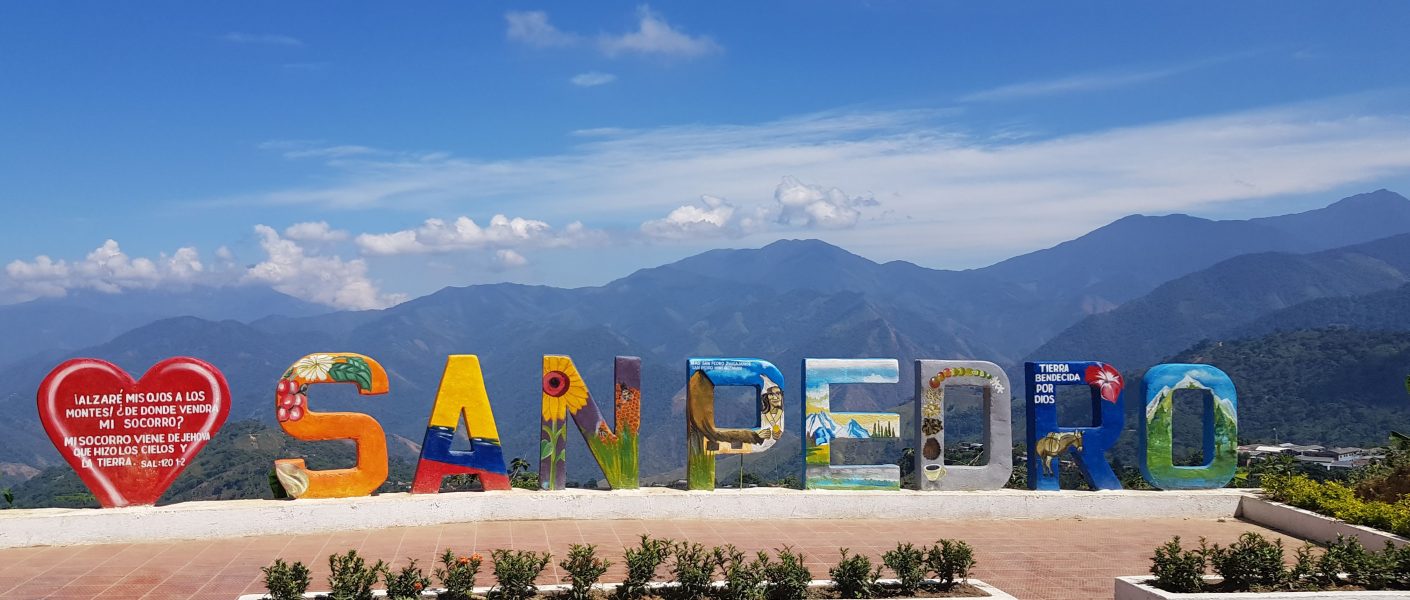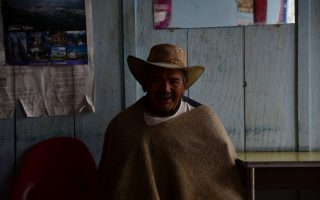We leave Santa Marta in the morning and drive along the coastal road for a while. Then we head into the Sierra Nevada, the highest coastal mountain range in the world. In jeeps we rock our way higher and higher on mostly unpaved roads until even the dirt roads come to an end.

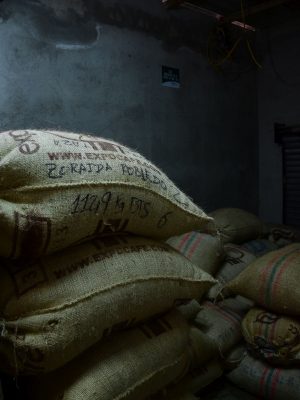


The cooperative “Red Ecolsierra” is focusing more on specialty coffee to increase profits for its members. This picture in the middel shows a poster stating what a specialty coffee from a “microlot” is: a special coffee that comes from only one farmer or finca (farm). Usually these are quantities between 500 and 2000 kg.
Here in San Pedro, the cooperative “Red Ecolsierra” buys the coffee from its members, stores it temporarily and then transports it further to Santa Marta. The left and right picture show some of the countless coffee bags.
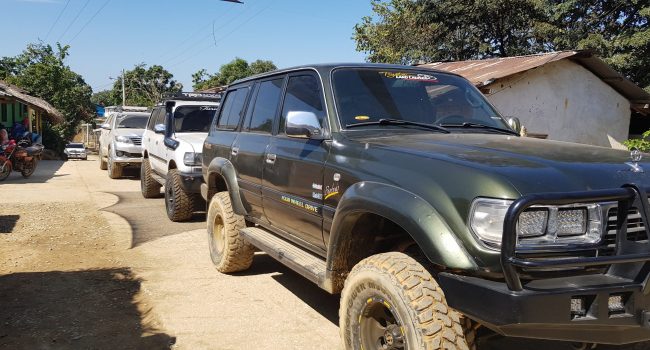
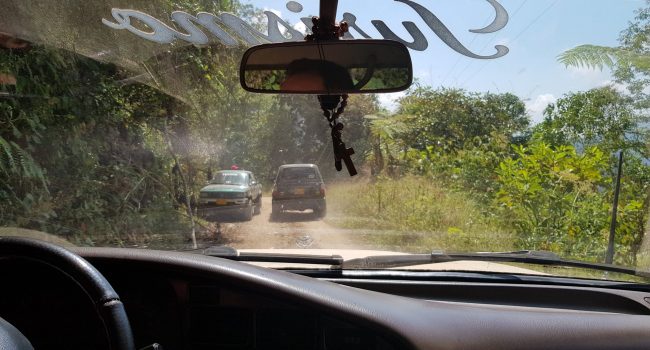

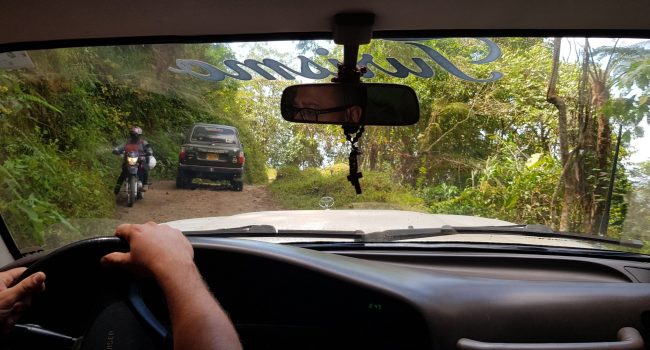
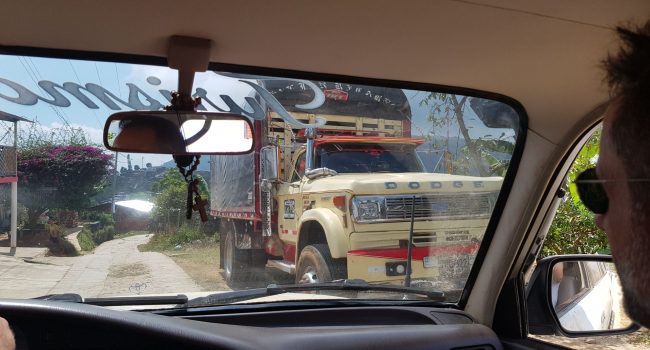
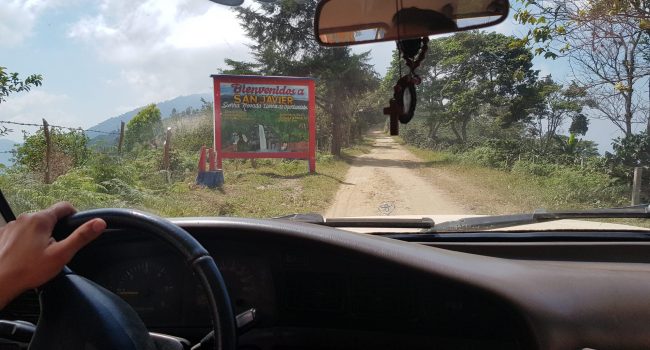
We change – from the jeep to mules and off we go. The way is still long and here, so close to the equator, it gets dark early.
And so we march and ride past freshly slaughtered chickens, hung bleeding along the fence, and coffee and legumes lying to dry on the side of the road.
The road winds through rough terrain, sometimes uphill, sometimes downhill. Mostly overgrown on the side of the street with tropical trees.
It is hot and dusty.
We reach the first finca we visit today – there is lunch and conversation about life on a coffee plantation, about the emerging ecotourism.




The family is excited, not too many tourists have passed through here in this remote area. And as always, everyone is very friendly and open to all our questions. We have another coffee, home grown and roasted of course, and then we are back on our way.
At some point we arrive in the valley, geographically probably the lowest point of our march. The valley is crossed by a small river. A bridge painted blue leads across it.
Full of pride, Javier (leader of our little “expedition”) tells us that this bridge is still relatively new. It was created from the social fund of “Red Ecolsierra”. Because this is one of the great advantages of the cooperative: the solidarity among the soci@s (the men and women who are part of the cooperative), the members of the cooperative. The prices are negotiated in advance with the buyers and therefore do not depend on the world market. Thus, the cooperative buys the coffee from the farmers for a fixed price and then resells it at a profit to foreign exporters. This way, the cooperative and its affiliated farmers achieve planning security. They also receive a premium for fair and organic coffee. Part of the cooperative’s profit goes into a social fund and is paid out in the form of a “community premium”.
Each family can dispose of the individual premiums independently and decide what to do with the money. The community premiums, on the other hand, are spent on joint construction or other projects. It is decided democratically for which project the additional profit is to be spent. And that’s how this bridge came about. A real relief, because now the coffee producers no longer have to wade through the river with their heavily packed mules.
Here the river looks harmless at the moment, but the main harvesting season for coffee in Colombia is during the rainy season. Then the water level here rises so much that mules and their owners often stood up to their bellies in water. With several bags of coffee (each 60kg) on the back, a dangerous undertaking. Also the dusty paths, which we now climb again, become extremely dangerous due to the rain – the dust turns into mud and the descent becomes a slide.
Lucky us that it is not raining today!
We continue on the march to the next finca and the end point of our tour today. But for the way, which the locals cover in 30-45 minutes, we need four times as long with the whole group. And so the sun slowly sinks over the Sierra Nevada. We unpack flashlights and cell phone lights to orient ourselves on the slippery and bumpy path. When we have climbed into our night quarters around 7 p.m., everyone is relieved.
Again there is a big hello and a warm welcome – we are the first group of ecotourists ever to set out here.
There is a great hustle and bustle from our group, children watching TV, women preparing food, men preparing the rooms and carrying entire bed frames from one room to another for this purpose. The hospitality is overwhelming – we are made to feel at home. At first, conversations don’t really get off the ground in all the hustle and bustle. Hard to tell who is actually staying here and who is a cousin or sister visiting from a neighboring finca.
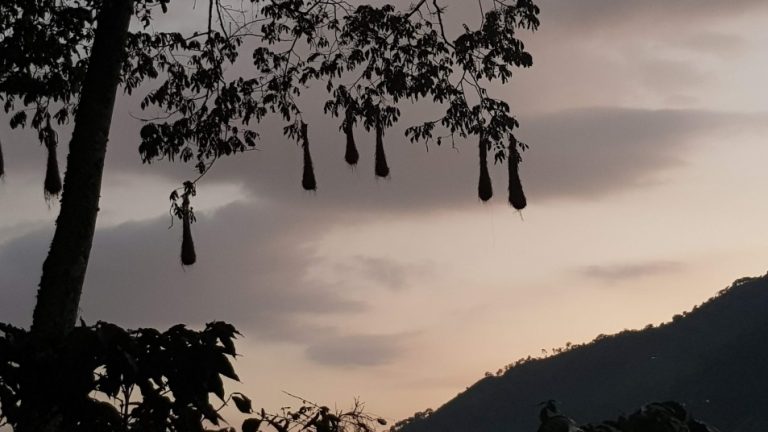
Tables are placed and chairs are moved – plastic chairs that would have long since ended up in the bulky waste at our place, which have been repaired with wire and are thus absolutely functional again.
We all somehow admire the simplicity of this life, where such very different things count. Here it is more important to be with family, to spend time together, to master daily tasks together, than to have the perfectly furnished kitchen or the most beautiful dining table. And for a romantically-enlightened moment, it seems like paradise on earth. In harmony with nature, with the position of the sun and the seasons. Rising early in the morning when the rooster crows. Harvesting coffee when it is ripe. Sitting at the table with the family and eating vegetables and fruits that you have grown yourself.
But then reality catches up with me again: for the children, that means a 45-minute walk to school uphill, downhill, in all kinds of weather. For the sick, it means a ride on a mule in an emergency and then a ride by car to the nearest doctor or hospital – or usually simply: no adequate medical care.
A life from day to day with dependence on the weather, the harvest, the world market price. The latter fortunately mattering less, through the membership in the cooperative “Red Ecolsierra”. And ultimately through our consumption of fair and directly traded coffee. But absolute freedom also looks different!


While I’m lost in my thoughts, the table is set for the first round – there’s not enough room for everyone at once, so we eat in stages. There is, as so often in recent days, a soup, then meat, salad, rice and fried plantain.
The rest of the group, which has no place at the table, sits on coffee bags, on the little wall that separates the porch from the garden, on the floor and on more chairs. I try to engage or involve the more reserved of our hosts in conversation by asking questions. At the beginning, things are a bit slow – we are probably all a bit tired from the (for us) unusually long walk. The language barrier is again an issue. But in the end, at least some intercultural conversations take place before we all fall dead tired into our beds.
